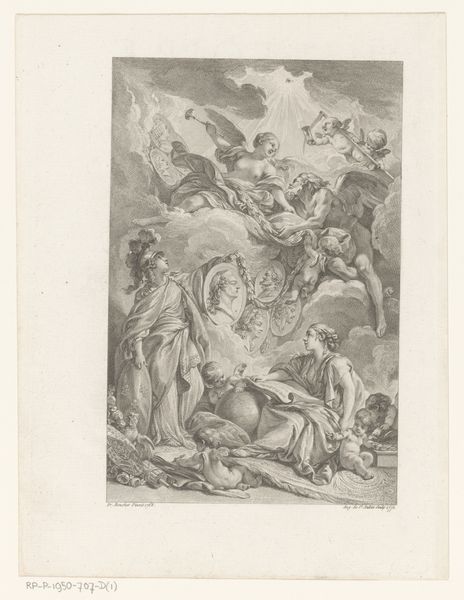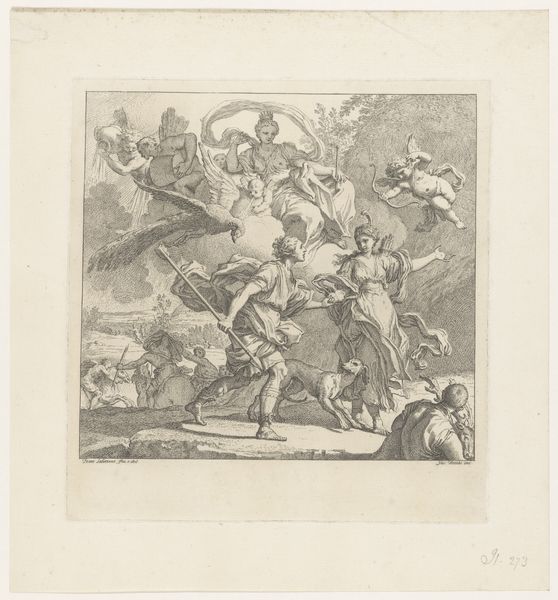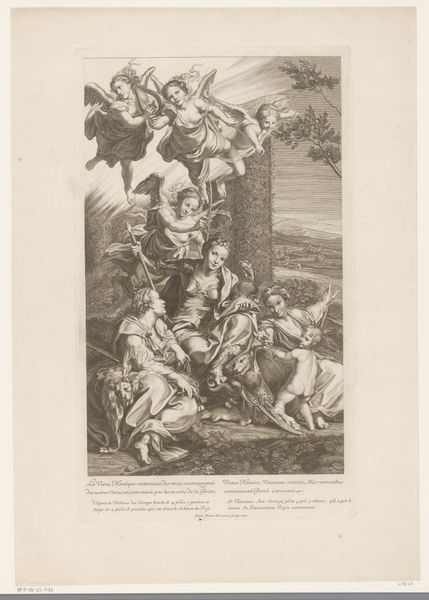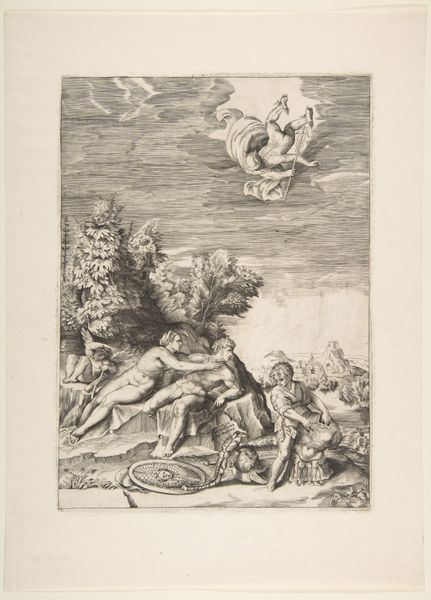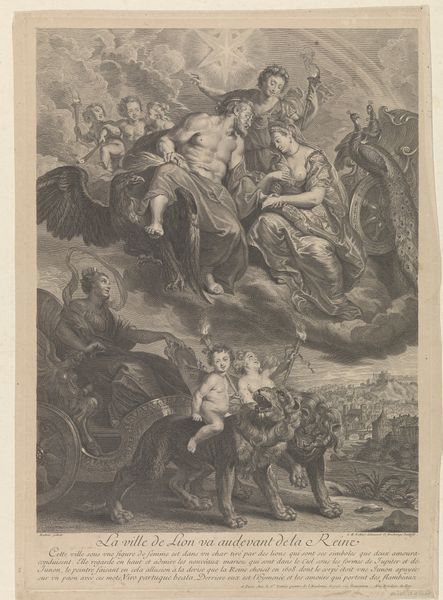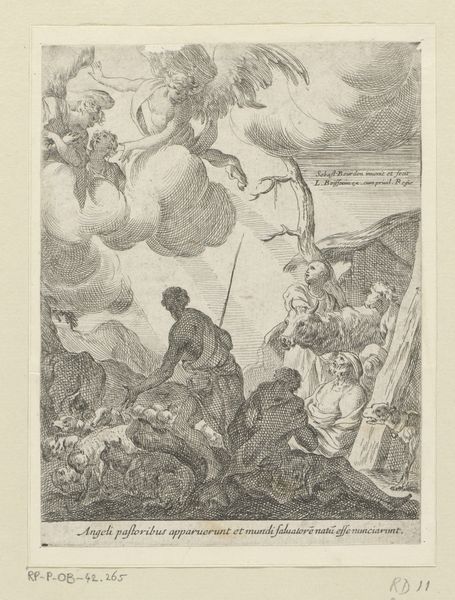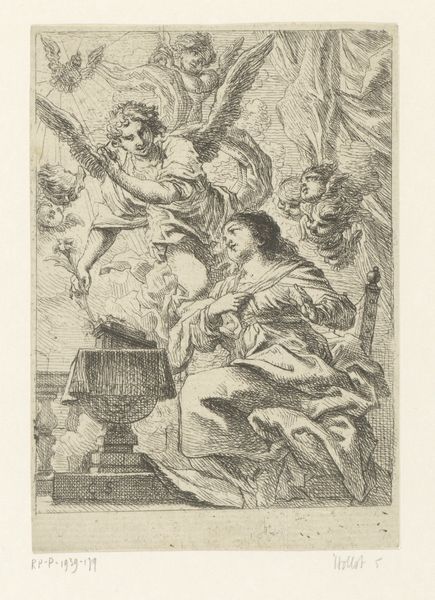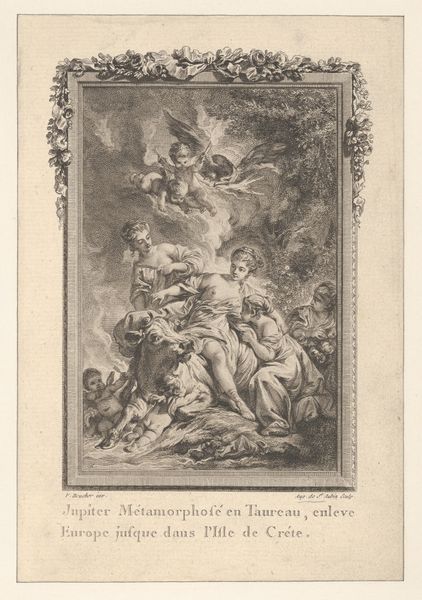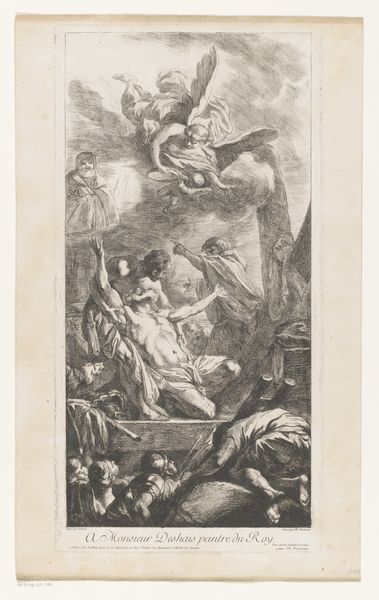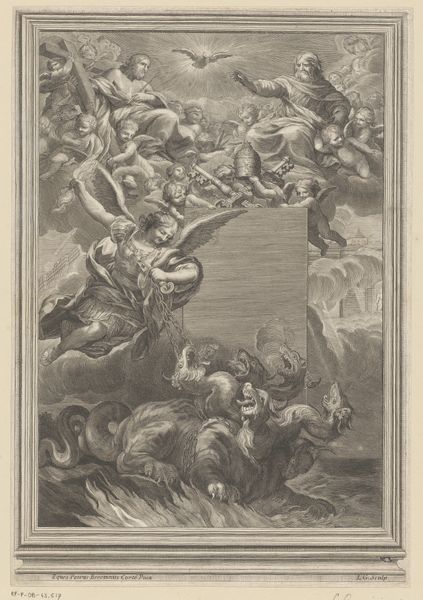
Allegorische voorstelling met de Adel en de Goddelijke Wijsheid die appelen brengen aan Ecclesia 1659
0:00
0:00
engraving
#
allegory
#
baroque
#
old engraving style
#
personal sketchbook
#
history-painting
#
engraving
Dimensions: height 300 mm, width 221 mm
Copyright: Rijks Museum: Open Domain
Curator: What an elaborate scene! This engraving, dating to 1659, is by Guillaume Chasteau, and it’s called *Allegorical Representation with the Nobility and Divine Wisdom Bringing Apples to Ecclesia*. It's currently held here at the Rijksmuseum. Editor: Immediately, I see a cascade of symbolic figures – it feels crowded, yet focused. The monochrome and dense composition evoke a very Baroque sense of drama, though everything appears so ordered. Curator: Yes, "crowded yet focused" nails it. It’s pure Baroque, overflowing with allegorical figures enacting a political theology. The nobility and divine wisdom are quite literally offering fruits – of knowledge, salvation perhaps? – to Ecclesia, who is seated regally above. The Church is, in a sense, the final destination. Editor: Note how Ecclesia is holding a cross in her hand, connecting faith and church authority and a symbol of her triumph! Those apples really take center stage. What is their relevance here? Curator: Apples, from antiquity through the Renaissance, represent knowledge, temptation, even salvation depending on the context. In this piece, they are deliberately placed: symbols of the Church offering spiritual nourishment to the faithful, reinforced by that biblical imagery overhead. It reminds us that everything is connected in these elaborate visual arguments. Editor: It’s fascinating how the composition weaves together religious and societal power structures. But how would viewers during the 17th century have interpreted such symbolism? Was it all readily understood, or were some nuances lost on them as well? Curator: Seventeenth-century audiences, more versed in classical and biblical allegory, were probably far more attuned to these visual languages. Prints like this circulated widely and fostered certain orthodoxies. However, the inherent ambiguities in symbols leave room for different interpretations. It is something modern scholars continue to debate. Editor: And look how even cherubs play a crucial role, acting as messengers, guiding, or supporting. Each has a distinct purpose. The figures aren't merely decoration; they actively participate in constructing a central narrative. Curator: Precisely. In studying works such as this, we get a glimpse into not only the religious, political, and artistic sentiments of the era but also the cultural values of its day. Editor: It offers a visual window into history and a symbolic mirror reflecting enduring concerns around authority and salvation. Curator: Indeed. It encourages contemplation on the role imagery and symbols play in establishing collective and lasting understanding.
Comments
No comments
Be the first to comment and join the conversation on the ultimate creative platform.
